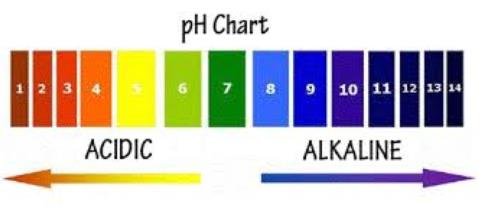What is sodium bicarbonate for pools? Sodium bicarbonate is one of the most important elements for the owners of swimming pools, so a good swimming pool can still be maintained well.
As the days get hotter and longer, hanging out and spending your weekend in the swimming pool can be a good idea.

The water that fills the pool has alkalinity and pH levels, which must be balanced. They are needed to make the water always clean.
Read also: What is Alkalinity in a Pool?
Besides, they can ensure that their swimming pool has a stable acidity. Sodium bicarbonate or baking soda can be a cheap solution for people to use as an alternative to the same chemical as the alkalinity and pH levels, which have a very pure grade level.
The Benefits of Sodium Bicarbonate
What are the benefits of using sodium bicarbonate? In fact, it isn’t as harmful as other chemical elements, so people can use it for the swimming pool, which will be safe for children and pets. It is available everywhere at an affordable cost, so you do not worry that it will be rare and very hard to get at its high cost.

This baking soda can be used online or in the grocery store to maintain your swimming pool. Due to this, most people would buy baking soda in bulk to save more dollars as it is always sold at a good price.
The Usage of Sodium Bicarbonate
You can feel glad using sodium bicarbonate since the process is effective and easy. You need to check the baking soda with a pH test strip and an eyedropper to check the water sample and whether the pH level of the water has reached the minimum level.
After the testing process, you need to turn the pool’s filter system on so that the baking soda can blend with the pool water naturally and easily. You need to ensure that nobody is in the swimming pool unless the baking soda has been completely dissolved.
Now, let’s discuss the specific quantity of sodium bicarbonate needed for effective pool maintenance. The rule of thumb for using sodium bicarbonate to increase alkalinity and raise pH levels involves considering the volume of your pool.
For instance, for 10,000 gallons of water, if the pH scale measurement indicates a pH level of around 7.2 or lower, adding approximately 3 to 4 pounds of sodium bicarbonate is advised.

If the pH level ranges between 7.2 to 7.5, a lesser quantity of about two pounds is sufficient. Beyond a pH of 7.5, adding sodium bicarbonate may not be necessary. This approach ensures that both pH and total alkalinity are optimally balanced, contributing to more precise and stable pool water conditions.
Regularly test your pool water to monitor both pH levels and alkalinity. Adjustments with sodium bicarbonate, or baking soda, are most effective when complemented by periodic assessments. This simple yet critical maintenance step aids in raising alkalinity without significantly altering pH levels, a common challenge addressed by soda ash in more drastic pH adjustment scenarios.
Sodium bicarbonate is a foundational element in pool maintenance, gently elevating the alkalinity to protect against rapid pH fluctuations that can harm pool surfaces and equipment. This proactive measure ensures a more stable environment that enhances the effectiveness of chlorine and other sanitizers, contributing to a healthier swimming experience.
Understanding the delicate balance between pH and total alkalinity is crucial for maintaining pool water that is not only clear but also safe for swimmers. Parts per million (ppm) is a critical measurement for determining the precise amount of sodium bicarbonate needed, with typical recommendations aiming to maintain total alkalinity from 80 to 120 ppm for optimal water balance.


